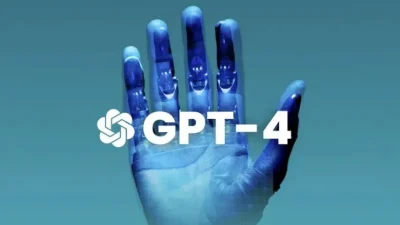When working with GPT-4 for complex or data-heavy tasks, it’s essential to ensure the efficiency and accuracy of your interactions. Overloading the model with overly complex or poorly structured queries can result in processing errors or less accurate outputs. This guide outlines strategies to break down complex tasks into manageable parts, optimize your requests, and achieve reliable results when working with GPT-4.
Understanding the Limitations of GPT-4
GPT-4, like any AI, has its limitations. While it’s a powerful tool capable of processing vast amounts of data and performing complex operations, there are constraints you must consider:
- Token Limits. Each request to GPT-4 is limited by the number of tokens. Both the input and output tokens count toward this limit. Overstepping these limits can truncate outputs or cause the model to malfunction.
- Contextual Dependencies. Long inputs with deeply nested or interdependent information may lead to misinterpretations or incomplete answers.
- Response Time. Complex queries can increase processing time, leading to delays, especially when managing large datasets.
Being aware of these limitations helps you design better queries and achieve more consistent results.
Breaking Down Complex Tasks
To handle large data volumes effectively, divide your tasks into smaller, more manageable parts. This approach minimizes errors, speeds up processing, and ensures that each segment of data is addressed adequately.
Step 1. Define Your Objectives
Clearly identify the goals of your interaction. For instance, if you need GPT-4 to analyze a dataset, decide whether you want insights, trends, summaries, or predictions. Defining objectives reduces unnecessary computations and aligns the model’s output with your expectations.
Step 2. Segment Your Data
Instead of feeding the model a large dataset in one request, break it into smaller chunks. Here’s how segmentation works effectively:
| Segmentation Strategy | Example |
|---|---|
| By Rows | Split a dataset into groups of 100 rows per request. |
| By Features | Focus on specific columns or attributes. |
| By Time Period | Process data month-by-month for time series. |
For instance, if you’re analyzing customer feedback, you could divide the data by categories (e.g., product type or region).
Step 3. Use Iterative Queries
Iterative querying involves multiple exchanges with the model. Start with a general query to outline key aspects, then drill down into details with follow-up questions. For example:
- Initial Query: “Summarize the main trends in this data.”
- Follow-up Query: “Explain the reasons for the observed trends in category A.”
This step-by-step approach keeps each request focused and within token limits.
Optimizing Input for GPT-4
Well-structured and concise inputs enhance the model’s performance. Poorly formatted or overly verbose queries can confuse the model or lead to incomplete results. Follow these best practices:
Use Structured Formats
Present data in a structured format, such as tables or lists, for better comprehension. GPT-4 processes tabular data efficiently and can extract insights more accurately from such inputs.
Prioritize Clarity
Avoid ambiguous phrasing and complex sentence structures. Provide context and specify what you expect in the output. For instance, instead of saying, “Analyze this,” use: “Identify trends in sales data and suggest growth opportunities.”
Incorporate Examples
When asking the model to follow specific logic or formatting, include examples. For instance:
- Input: “Summarize customer feedback like this: [Example Summary].”
Examples act as templates and guide the model’s response structure.
Managing Output Overload
Just as inputs can overwhelm the model, outputs can be excessive or unwieldy if not properly managed. Strategies to address this include:
Requesting Summaries
If a task requires detailed analysis but produces an overwhelming amount of text, request summaries. For instance:
- “Provide a 100-word summary of this report.”
Setting Boundaries
Define output constraints, such as character limits or specific data points. For example:
- “List the top three trends observed in this data.”
Using Post-Processing
After receiving the output, further refine or analyze it externally using programming tools like Python or Excel.
Common Challenges and Solutions
Despite best practices, challenges may still arise. Below are common issues and their remedies:
| Challenge | Solution |
| Truncated Outputs | Shorten the input or split it into smaller parts. |
| Inconsistent Responses | Provide clear examples or templates. |
| Increased Response Time | Optimize input size and complexity. |
Practical Applications of These Strategies
Scenario 1. Data Summarization
When summarizing a large dataset of customer reviews, use segmentation to divide reviews by category or region. Process each chunk separately, then combine the results into a cohesive summary.
Scenario 2. Text Classification
For classifying text data (e.g., sentiment analysis), define specific categories in advance. Use iterative queries to refine the classification logic.
Scenario 3. Time-Series Analysis
Split time-series data by intervals (e.g., monthly or quarterly). Analyze each segment to identify trends before merging insights for the entire timeline.
Conclusion
Working with large datasets in GPT-4 requires careful planning and thoughtful execution. By understanding the model’s limitations and applying strategies like task segmentation, structured inputs, and iterative queries, you can achieve accurate and efficient results without overwhelming the system. Properly handling large data not only improves output quality but also enhances your overall productivity.






